Coastal Classification
Coastlines can be classified in one of two ways:- Changes with respect to sea level (Emergent or Submergent)
- Type of erosional activity (Erosional or Depositional)
Emergent or Erosional coasts
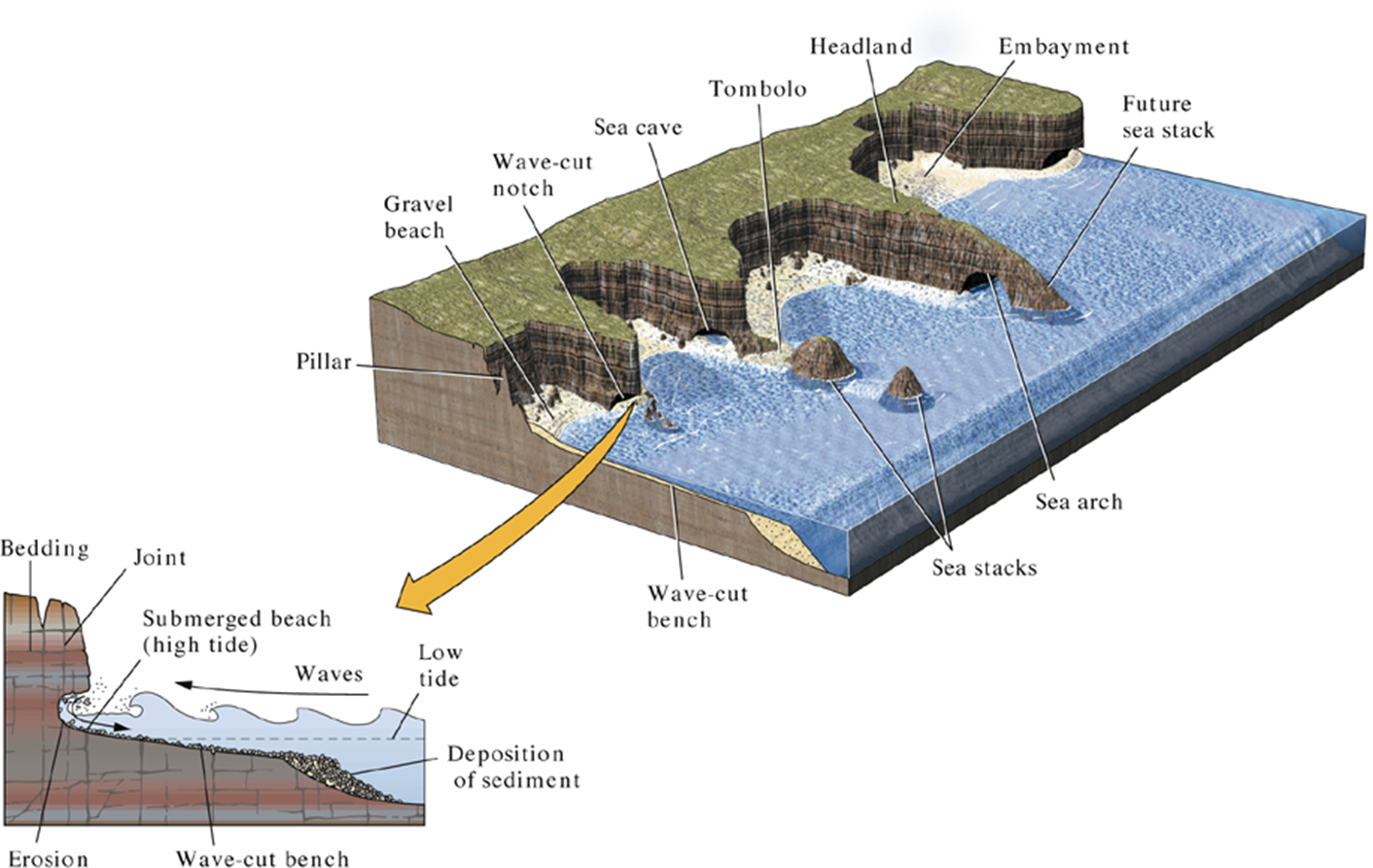
Emergent or Erosional coastlines are caused by either an uplift of the land, or a drop in sea level . Cliffs are a common feature on this type of coastline. Waves tend to hit the cliffs in more or less the same area all the time, so erosion is concentrated in these areas. This undermines the rock, which can create features such as:
- Cliffs & a “straight” shoreline due to headland erosion

Truncated headlands mark uplifted coast at Point Reyes, CA.
Source: http://jan.ucc.nau.edu/~rcb7/Oceanography.html - Sea caves, Sea Arches & Sea Stacks form as waves undercut a cliff. First a cave will form. As erosion continues, the cave will continue to the other side, forming a sea arch. Finally, sometimes the roof of either the cave or the arch will fail, creating a sea stack (or sea island).
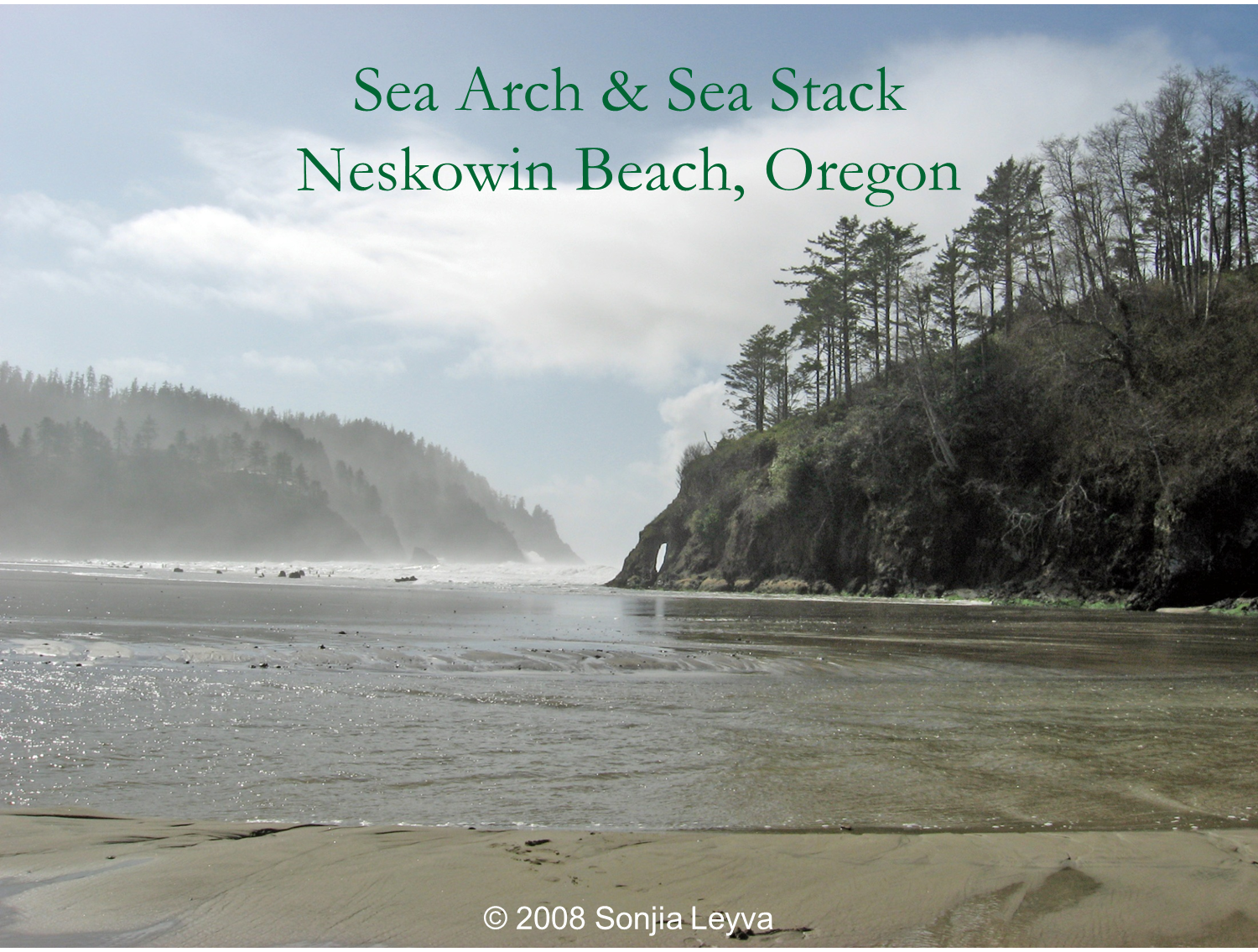
- Wave-cut platforms

Wave cut platform at White's Point, Palos Verdes Peninsula, California. Photo by S. Leyva - Marine terraces - Uplift or a drop in sea level will leave beaches and wave-cut platforms high and dry. The Palos Verdes Peninsula has 13 terraces. The top two completely encircle the hill, indicating that the peninsula was once an island before uplift caused more of the area to emerge from the sea, connecting it to the mainland.
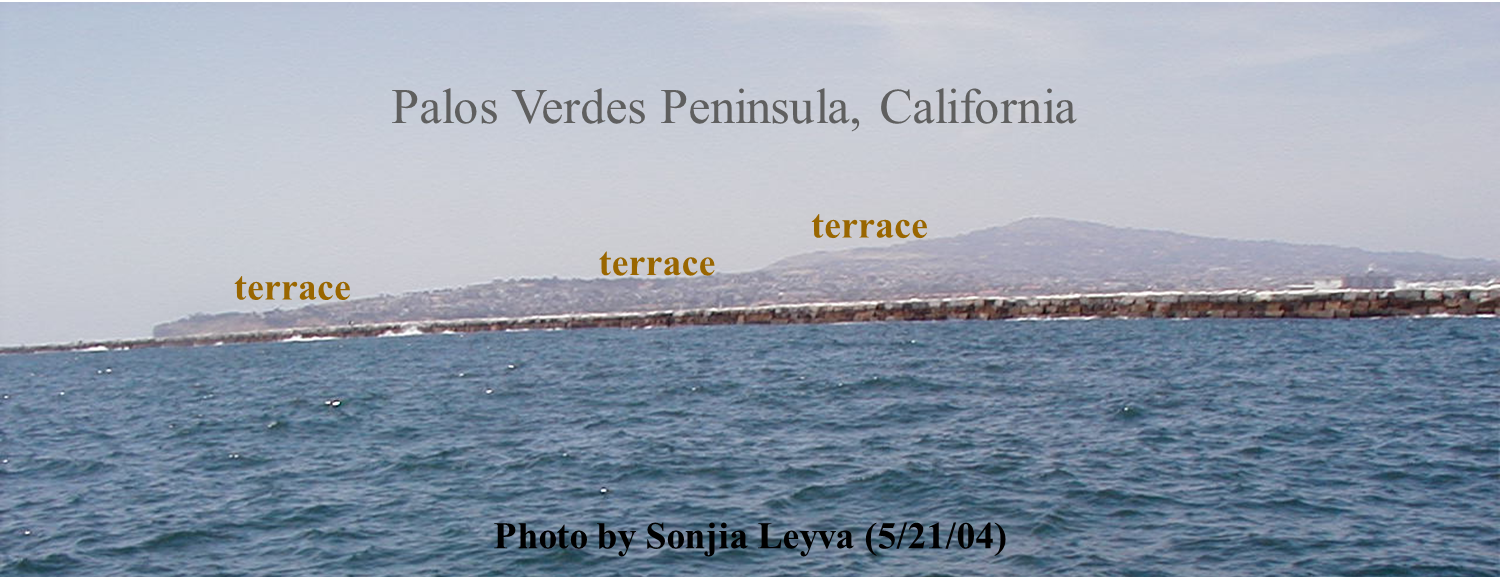
Submergent or Depositional coast
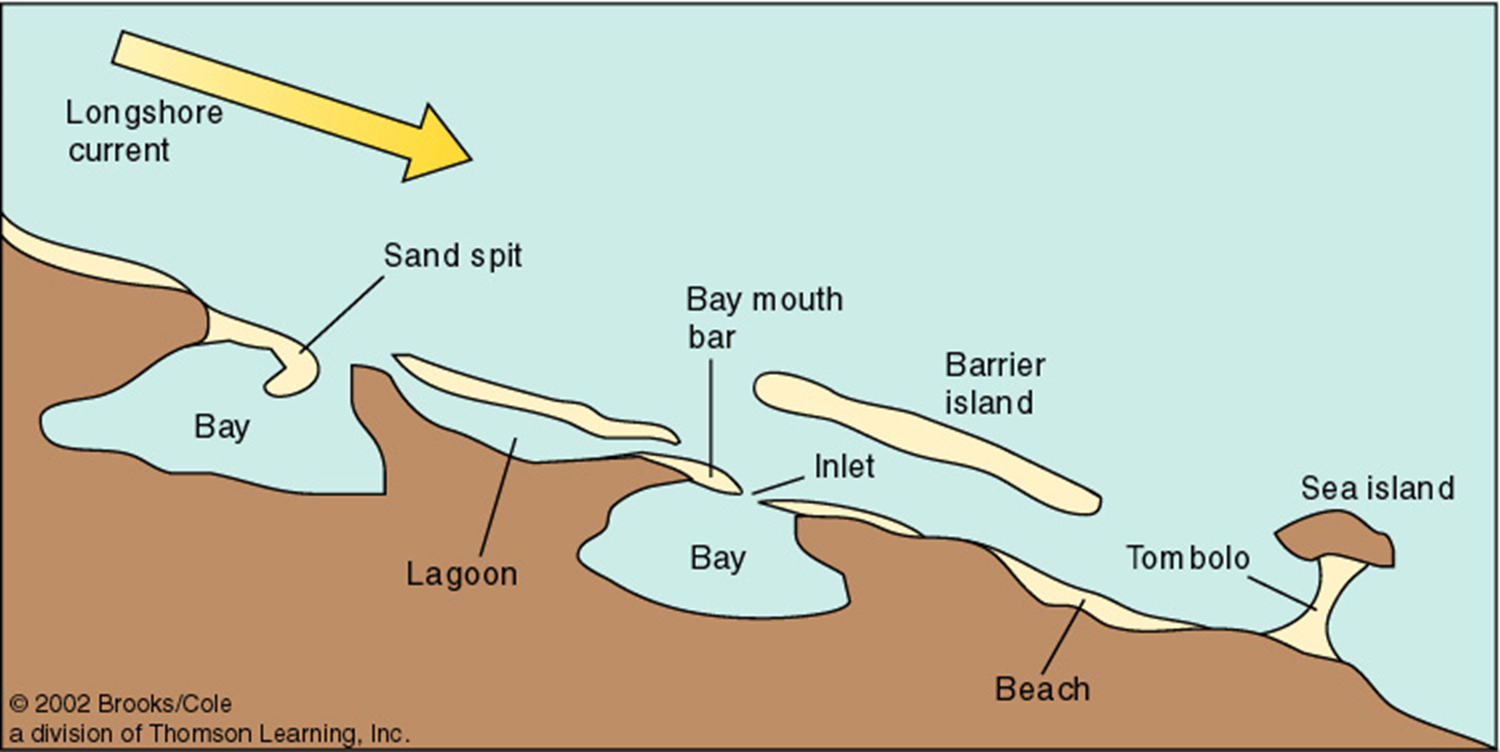 Submergent or Depositional coastlines are caused when land adjacent to sea subsides, or sea level rises. Features of a Submergent coast include:
Submergent or Depositional coastlines are caused when land adjacent to sea subsides, or sea level rises. Features of a Submergent coast include:
- Highly irregular shoreline
- Estuaries — Drowned river mouths
- Spits & Baymouth bars form as the longshore current moves up (or down) a coastline. Lowered wave energy or a bend in the coastline causes sediment to be deposited, forming a variety of features such as spits, baymouth bars, or barrier islands.
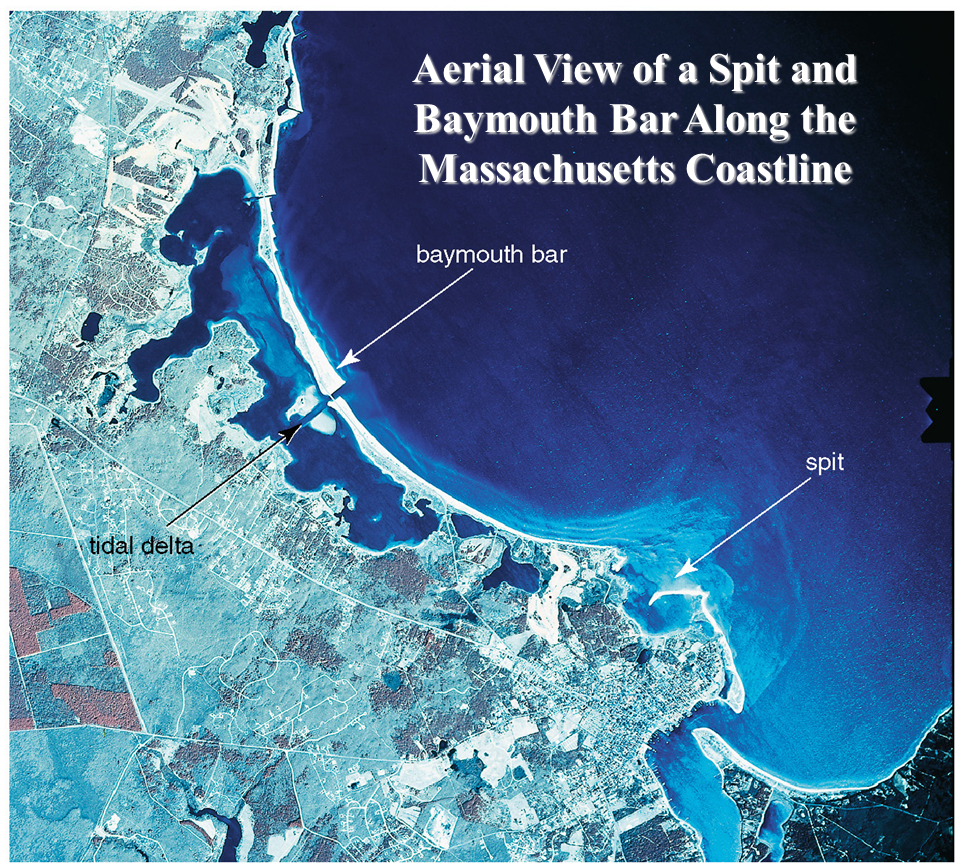
- Tombolos are areas of sand that connect the mainland to a sea stack or sea island.
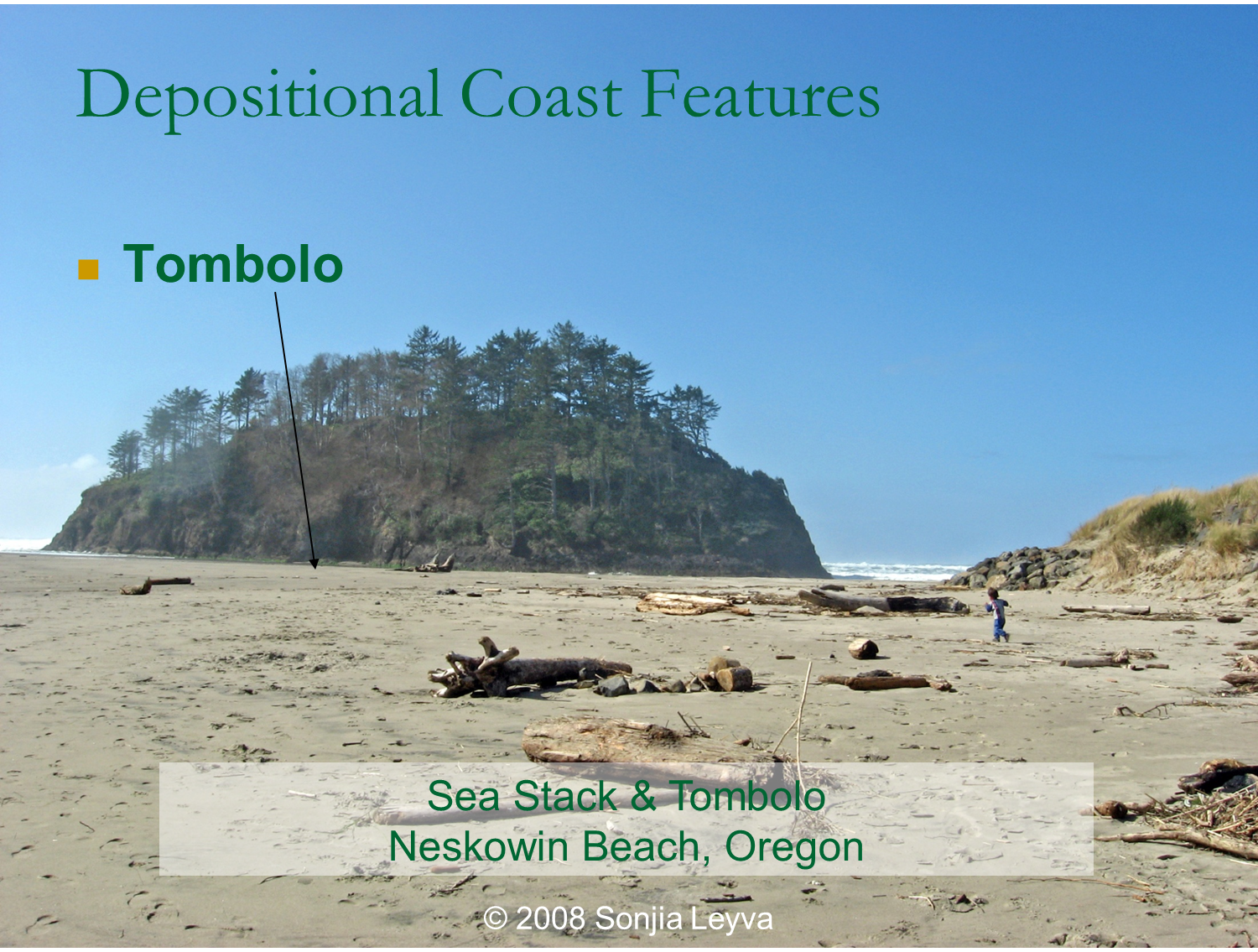
- Barrier islands are long, narrow offshore deposits parallel to shore. Most developed due to rise of sea level about 18,000 years ago and are moving landward over time. They are common East and Gulf coasts of U.S. One of their functions is to protect mainland from high wave activity.
- Deltas form as sediment carried downstream by a river is deposited when the river enters the ocean. These sediments are reworked by ocean processes: waves, tides, etc. River distributaries carry the sediment to ocean.
<< back |
||
